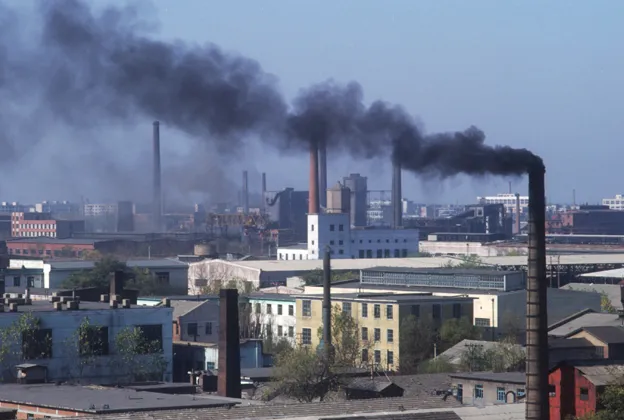Black carbon is emerging as a significant player in the global discourse on climate change, exerting a warming effect of about 0.6 watts per square meter on Earth’s surface.
Black carbon (BC), often referred to as soot, is emerging as a significant player in the global discourse on climate change, exerting a warming effect of about 0.6 watts per square meter on Earth’s surface. Despite not falling into the traditional category of greenhouse gases, its influence on climate dynamics and human health cannot be understated.
In a recent interview with Anadolu, Burcu Onat, a lecturer in the environmental engineering department at Istanbul University-Cerrahpasa, shed light on the multifaceted impact of black carbon emissions on both planetary climate and public well-being.
Onat revealed startling findings, stating that nearly 3 nanograms of black carbon were detected per gram of snow in Antarctica. These emissions stem primarily from the incomplete combustion of coal, diesel fuel, gasoline, and biomass.
According to data from the Climate and Clean Air Coalition (CCAC), a staggering 5.8 million tonnes (6.3 tons) of black carbon were emitted in 2019, with household energy consumption contributing to 43% of global emissions.
Onat emphasized the significance of BC as the third-largest contributor to global warming, following carbon dioxide and methane. Unlike greenhouse gases, which primarily affect the atmosphere through a single mechanism, black carbon exerts its influence through three distinct pathways.
Firstly, black carbon directly absorbs sunlight in the atmosphere, leading to atmospheric warming. Secondly, when black carbon settles on surfaces such as snow and ice, it reduces the surface’s reflectivity, accelerating the melting of glaciers and snow surfaces. Finally, when BC is present within clouds, it alters reflectivity, cloud duration, and precipitation, further contributing to atmospheric warming.
Discussing the importance of monitoring black carbon concentrations in urban areas worldwide, Onat highlighted that average concentrations range between 5 and 20 micrograms per cubic meter.
The impact of BC on health cannot be ignored. Onat stressed that high proportions of BC in particulate matter increase health risks, particularly for vulnerable populations such as children, who face heightened asthma risks and more severe respiratory diseases.
To mitigate the effects of BC pollution, Onat recommended minimizing outdoor activities on days with poor air quality and using masks when necessary. She also advocated for the implementation of black carbon capture filters, especially in mobile sources, to curb emissions from fuel combustion.
Furthermore, Onat proposed the widespread adoption of rail systems and electric vehicles in urban public transportation as a means to alleviate the burden of black carbon emissions.
As the world grapples with the pressing realities of climate change and its far-reaching consequences, addressing the role of black carbon emerges as a critical step in mitigating both environmental degradation and public health risks. Efforts to curb BC emissions and promote sustainable alternatives are imperative in forging a path towards a cleaner, healthier future for generations to come.
